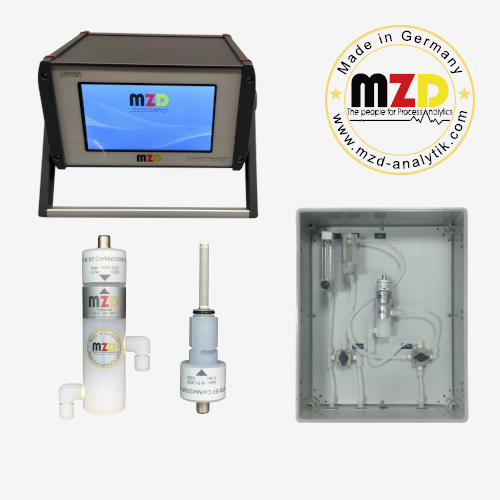
SMART-MT Trace Moisture Analyzer for Natural Gas
1. Overview of natural gas
1.1 Introduction
Natural gas is mainly composed of alkanes, of which methane accounts for the majority, with small amounts of ethane, propane and butane, in addition to hydrogen sulfide, carbon dioxide, nitrogen and water gas and a small amount of carbon monoxide and trace amounts of rare gases such as helium and argon. It is one of the safer gases, it does not contain carbon monoxide, but also lighter than air, once leaked, will immediately spread upward, not easy to accumulate the formation of explosive gases, the safety is higher.
1.2 Application
The use of natural gas as an energy source reduces the use of coal and oil, thus greatly improving environmental pollution; as a clean energy source, natural gas reduces sulfur dioxide and dust emissions by nearly 100%, carbon dioxide emissions by 60% and nitrogen oxide emissions by 50%, and helps to reduce acid rain formation and mitigate the earth's greenhouse effect, fundamentally improving environmental quality.
2. Effect tof moisture in natural gas on natural gas transmission
2.1 Corrosion of pipelines during pipeline transmission, which can even be ice-clogged.
2.2 Increase the resistance of gas transmission and make the pipeline transmission capacity decrease.
3. The main method of natural gas moisture removal
3.1 The incoming natural gas (30℃, 8.38MPa) is first fed into the natural gas heat exchanger, and the heat exchanged with the low-temperature clean natural gas (-23℃, 4.6MPa) flowing through the shell process after the heat exchanger tube process and the throttling and expansion low-temperature separation and de-hydrocarbonization and dewatering process.
3.2 After pre-cooling, the natural gas enters the primary low-temperature gas-liquid separator for low-temperature gas-liquid separation (operating temperature -10℃), and the separated natural gas enters the secondary low-temperature gas-liquid separator for low-temperature gas-liquid separation after junction cooling and expansion (pressure 4.6MPa after throttling, temperature -23℃) to complete the dehydration and de-hydrocarbonization of natural gas.
4. The role of trace moisture analyzer in the dehydration process
The trace moisture analyzer samples the dewatered natural gas to analyze its moisture content (the trace moisture content of the process is typically 0.1 PPM and the alert point is 0.25 PPM) to confirm that the dewatering effect meets the qualified standards for the outgoing gas.
5. SMART-MT trace moisture analyzer features
High measurement accuracy, stable operation, long service life, moderate price and low maintenance costs. Ceramic sensors are resistant to corrosion of hydrogen sulfide and have low cost of use (no calibration required, regular regeneration of probe coating with 40% phosphoric acid).
